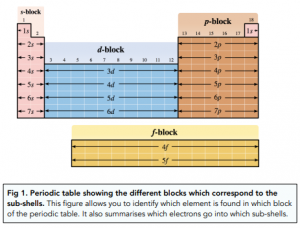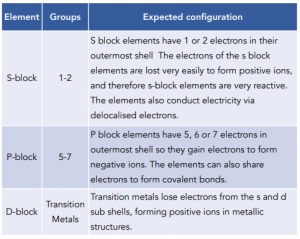Periodicity - Classification (A-Level Chemistry)
Classification
The Periodic Table
Periods and Groups
The elements in the periodic table are arranged in order of increasing proton (atomic) number.
A period in a periodic table is a horizontal row. All the elements in a period have the same number of electron shells.
The number of the period that the element is found in tells you the number of electron shells that the atom has.
A group in a periodic table is a vertical column. All the elements in a group have the same number of outer electrons.
The number of the group that the element is found in tells you the number of outermost electrons that are found in the atom. E.g. Elements in Group 3 have 3 electrons in their outers shell. Remember that elements in Group 0 have a full outer shell!
Electron Configuration
- The electron structure defines an element’s chemical properties. Electrons are transferred when atoms react to form ions. Therefore electron structure is responsible for how an element’s chemical behaviour.
- Elements in the same group are very similar. Elements in the same group (columns) have the same number of outer electrons, and therefore have similar chemical properties.
- The periodic table is split into 3 sections. The periodic table is broken up into 3 different blocks – s, d and p blocks.

The s-block elements have an outer shell configuration of s1 or s2.
The p-block elements have an outer shell configuration between s2p1 and s2 p6.
The d-block elements have an outer shell configuration between s2 p6 3d1 and s2 p6 3d10







Still got a question? Leave a comment
Leave a comment